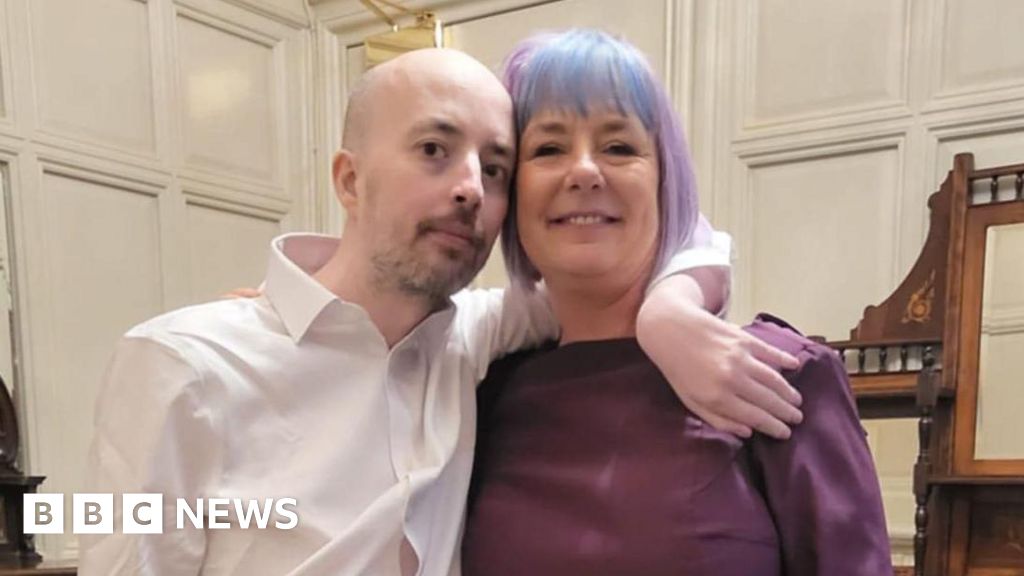One of Donna Dennis’s architectural installations — a false tunnel entrance installed on the Mad River — so confounded local Ohioans that one morning in August 1981, someone pipe-bombed it. New York’s bomb squad confiscated part of another structure, a cabin occupying City Hall Park, in 1986. The works by Dennis are so faithful to existing vocabularies of infrastructure that they defy classification as art objects.
In 1970s New York, as painting and sculpture gave way to a gold rush of conceptualism, environments, performance and politics, the Ohio-born Dennis, fresh from art school in Minnesota and Paris, tuned into consciousness-raising women’s groups and devoted her craft to unsettlingly frank resemblances of buildings.
First came hotel and subway facades, then houses in the round — each a combination of construction and artist materials, and slightly too small to pretend functionality. (For lights she uses appliance bulbs, and her doors terminate at her eye level.) Since the ’80s she has gone industrial: room-size lift bridges, stairways, rail platforms, pump houses and roller coaster girdings that have increased in complexity as they lessen in number.
This month, the gates crack on this scarce and challenging oeuvre. The bellwether art gallery O’Flaherty’s has darkened its space on Avenue A to a dramatic degree, and filled it with five Dennis works from the 1970s and ’90s, for a show called “Houses and Hotels.” Whatever else they do, these shrines to vernacular architecture, humane, seductive and commanding, make clear that a godmother of installation art has been unwisely overlooked.
“Two Stories with Porch (for Robert Cobuzio)” (1977-79) is a 10-foot-tall rowhouse in the style of suburban New Jersey. From a darkened first-story window, a VACANCY sign glows greenly. (A tribute to the late friend of the title.) A wallpapered room lit by ceiling bulb is just visible upstairs. As your eyes adjust in the dark, unlit details fade in: a coat of aluminum paint on the cornice, a staircase through the curtain, a tracing of mortar among stones in the foundation.
Two tourist cabins from 1976 and 1986, inspired by a Walker Evans photo from 1930, are detailed soulfully, too, with patched screen porches and a handmade fold-up cot inside one. But at chicken coop size, as they vibrate in the dark they also unsettle.
“I’m in love with the facts,” Dennis explained last month at her studio in upstate New York, her long silver hair braided neatly down her back. But facts mustn’t glare: Holly Solomon, pathbreaking dealer of the Pattern and Decoration movement of the 1970s, “agreed to paint her gallery dark,” Dennis said, for her installation in 1980 — a warm gray Dennis borrowed from the sculptor Louise Nevelson, who had shown her dark sculptures in low light. “The next show was Laurie Anderson, and Laurie Anderson said ‘Donna, can I keep that color for my show?’”
The nocturne effect so well achieved at O’Flaherty’s, combined with the upward tilt in the floor of the gallery (a former movie theater), tricks your perspective in the manner of Hitchcock’s dolly zoom. You feel a distance, but you’re up close.
These works have been in her possession, some unseen, for decades. “First I felt relieved that they were in as good shape as they were,” the sculptor told me. “Then I felt really proud of the young woman I was.”
Dennis’s devotion to the built environment unfolds with striking clarity in “Writing Toward Dawn,” an edition of her diaries published this month by Bamberger Books and edited by Nicole Miller, the Dennis authority. A lifelong diarist (“You’ll end up in it,” Dennis promised as we surveyed her buckling shelf of notebooks), the artist has excerpted the years 1969 through 1982 — from her first attempt in three dimensions to her Whitney Biennial appearance in 1979, to the Venice Biennale in 1982.
Born in 1942 (in the same bedroom as her mother) to strictly observant Scotch Presbyterians, Dennis studied painting at Carleton College, Minn., with a year at the American Center in Paris.
Though Philip Guston admired her automotive paintings of 1966, the book begins as she leaves the canvas behind. After four years in New York, she drafts a menu of possible mediums that captures the pluralist vanguard: “Canvas or not? Paint or not? Sculpture? Environment? Stain? Brush?”
It takes bravery to publish one’s trials, I remarked. (May 24, 1974: “Was rejected by Silvermine [Arts Center] today. Fell down subway stair and broke my only pair of shoes.”) Dennis replied flatly: “Well, I’m a feminist. And though I felt empowered by Anaïs Nin’s diaries, I was annoyed she never explained where her money came from.”
Money, mainly from design jobs or desk jobs, but also from “very minimal” gallery sales, is never out of mind in her chronicle. More documentary than confession, the diaries itemize extremes of finance, euphoria, depression, necessity, body image, love and — above all — the slow genesis of works such as the “Two Stories” and “Tourist Cabin Porch (Maine)” (1976) on view at O’Flaherty’s.
While she rivals Frida Kahlo’s private writings for candor and Warhol’s for New York chronicle, what makes “Writing Toward Dawn” rare among artists’ diaries is the self-education Dennis follows from scratch. Carpentry, neon, electrical, metalwork and photo research are embarked upon with an earnestness — and with an eventual mastery — that should encourage emerging artists in any medium.
Though this edition is helpfully illustrated and annotated, a strong monograph of Dennis’s work, also recently published by Monacelli, explains with a wealth of photos her progression from canvas to sculpture to installation.
As for the larger-scale industrial works occupying the diary’s final years, and ever since, The Ranch in Montauk, N.Y., opens its summer season with a temporary display of her subway platform “Deep Station” (1981-85).
“I envy Renaissance & N. Renaissance painters with their religious themes,” she wrote in 1970. New York’s answer was secular. By 1973 the city’s architecture had taught her a syntony that still speaks through her work: she fixates upon buildings that are “filled with lives but fleetingly, superficially, sad-mysterious.” And this: “I have an urge to record them in a Hopper-like way.”
Yearning of this kind — like Hopper’s single lit windows, Miles Davis’s tone when muted or E.M. Forster’s “Only connect” — reveals a particularly urban brand of romanticism. “When I’m alone, everything becomes beautiful,” Dennis writes in 1972. “But when I’m with people,” she continues, “I lose my sense of being beautiful, mysterious, and lonely.”
As with her works at O’Flaherty’s, one finds an isolated presence in space which nonetheless comforts by being complete. With prolonged viewing, her works seem to take on personhood.
Like many of her TriBeCa generation, Dennis fought to keep her unzoned loft — a struggle documented in the diary. She’d hurry to court hearings, she told me, “with sawdust in my eyelashes,” and in 1982 secured her renter’s rights, though market pressures continued to mount.
Exterior shots of her old studio on Duane Street, with its windows aglow from the city street at night, appear in “The Art of Metaphor,” a convincing short film about Dennis by the filmmaker Kate Taverna that debuted in Montreal last month. Among its strengths is Dennis’s reading from the diary in her principled Midwestern voice. The film travels this month to Boston, then Berlin and Madrid.
By 2018, among the last tenants, Dennis took her buyout and left, with her partner, for a neocolonial home and studio off the Hudson River, whose sloping grounds she compares to Andrew Wyeth’s “Christina’s World.” As she leans into the brisk March wind, clad in black, one senses her plain dealing honesty without exchanging a word.
The suddenness of Dennis’s renaissance this spring invites comparisons to her more visible colleagues in installation: like Red Grooms with his joyous “sculpto-pictoramas” in Yonkers and Queens, or Alice Aycock with her vortexes upstate and along the F.D.R. Drive. More ambiguous, perhaps, Dennis’s works have not been so readily seen.
The solidarity of second-wave feminism “gave me a cause greater than ‘Donna Dennis wants to be a great artist,’” she told me, alluding to Linda Nochlin’s provocation on women’s obscurity in art history. Her eyes well when she describes the bearing of a torch between generations of female artists, a subject made clear to her by writers such as Virginia Woolf and Germaine Greer. “It gave me something outside of myself that I believed in and felt I was part of and gave me a purpose.”
A purpose there all along. “I used to worry about being avant-garde enough, opening up new territories in art history,” she wrote 53 years ago. “Now I know that my path is within myself.”
Donna Dennis: Houses and Hotels
Through April 28, O’Flaherty’s, 44 Avenue A, oflahertysnyc.com.















































